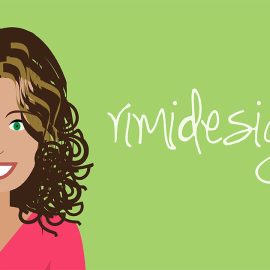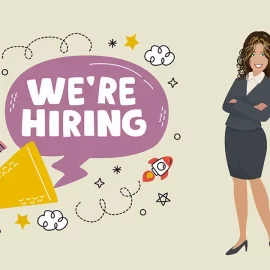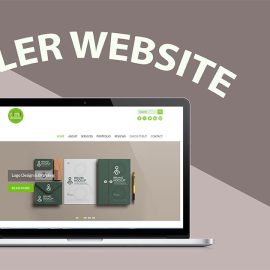
12 Blunt Truths of Running Your Own Design Business
So you’ve decided to embark on a freelance design career. Here’s what you need to know to stay productive, profitable and sane.
1. The more successful you get, the less design work you will do.
If you want to be a designer, you don’t want to start your own design business. Be a freelancer or work for someone else instead. Because when you start your own design business, you spend most of your time on the business side of things, like in meetings, meeting people, doing employee reviews, invoicing, writing proposals and more.
So if you want to be producing design work the majority of the time, you should realise that starting an agency might take you down a different path.
2. No matter how skilled you get or how big your agency grows, you will still get frustrating feedback and difficult clients and projects.
You will get fewer frustrating projects as you get better at your job, as you become a better communicator and attract better clients. But even huge agencies have difficult clients, and they’re basically the undisputed heavyweight champs of design.
Not every project will be great. But if you learn to communicate, keep getting better at your craft, learn how to identify red flags early on and trust your gut, you can mitigate the bad projects.
3. Your costs scale as your business scales.
This is a fact. If you want to take on more work, you need to bring people on to help with that. When you bring people on, you add salaries, software, hardware, plus other costs. You need to make sure you’re running the numbers and are making your hiring decisions based on those, not gut feel.
4. You will be doing at least 3 people’s jobs at once, so you better love what you’re doing.
Prepare to be overworked for a while, but you should plan on solving that problem. Working ridiculous hours is detrimental on many levels. Set up a business organisation chart early on if you plan to grow. Add your name to all the positions you’re covering (which could literally be all of them), then work toward replacing yourself one position at a time.
5. You are not charging enough.
What to charge is one of the most frequently asked questions in the design community, and with good reason. It’s a tough nut to crack. There isn’t a “one size fits all” solution. Chances are, though, you’re not charging enough. Upping your rates shouldn’t be based on feel but on good, ol’ fashioned maths in order to cover all expenses.
6. You will be constantly earning client trust, over and over, so get good at it.
You will be doing a lot of project-based work and have a constant influx of new project requests from new clients. What does that mean? That you are constantly needing to prove your value, knowledge and expertise to clients. And that’s how it should be.
Clients should be cautious, just like you would be cautious when you’re spending tens of thousands of dollars. Listen to your prospective clients, understand their fears and concerns and mitigate them.
7. There will be extreme highs and lows.
It really is a roller coaster. You’ll get surprise gifts and words of thanks from some clients. Other clients will yell and swear at you over the phone. Appreciate the former. Maybe don’t work with the latter anymore.
8. You will hire good people and you will help them grow and improve and they will eventually leave.
And that last part will suck. It will not feel good in the short term when people move on, but the long-term benefits of having good people and genuinely trying to help them grow, far outweigh the bad parts. Some employees will be with you for a long time and that will be great. Just be prepared that they won’t all be like that.
9. You will have to chase down a deadbeat client.
No matter how diligent you are, eventually this will happen. Sometimes it’s intentional, sometimes it’s unintentional, but it’s always frustrating. There’s not much you can do, outside of having a good contract, honouring your part in it and continually following up until you get paid. Don’t threaten to break any knees. Nobody is scared of a designer’s keyboard muscles anyway.
10. You will spend money.
You will start ultra lean but as you grow, you will have to spend money on a ton of items like new laptops, costly design software, backup solutions, insurance, furniture, various applications, accountants, salaries, and so on. The key is determining whether the value of what you’re buying outweighs the cost.
11. You need to be an extremely good communicator.
Communication has two sides: listening and talking. A lot of people miss that first one. If you’re not a clear communicator, you’ll learn fast if you’re going to succeed. You need to communicate exceptionally well with clients, contractors, employees, accountants – everyone. Being a great production designer isn’t enough, so don’t focus squarely on it.
12. Those processes you made fun of at your last job? You will end up implementing at least a few similar ones.
When you start, you can get by with few documented processes, no policies, and so on. But as you grow and bring people on, that stuff has to be written down somewhere. The more moving parts you add to the machine, the more complex it gets.
Processes, meetings and documentation are the oil to a smooth-running project engine. It’s important not to get bogged down in inefficiencies, but it’s equally important not to just wing it.
Don’t let these points dissuade you from starting a design agency – or any other business, really. That’s not the point. Being the captain of your own ship is an amazing feeling, and if you think you’re up for it, do it. It’s worthwhile to know, though, that the road isn’t always smooth. The more prepared you are, the more enjoyable the journey.
SOURCE: Jeff Archibald



